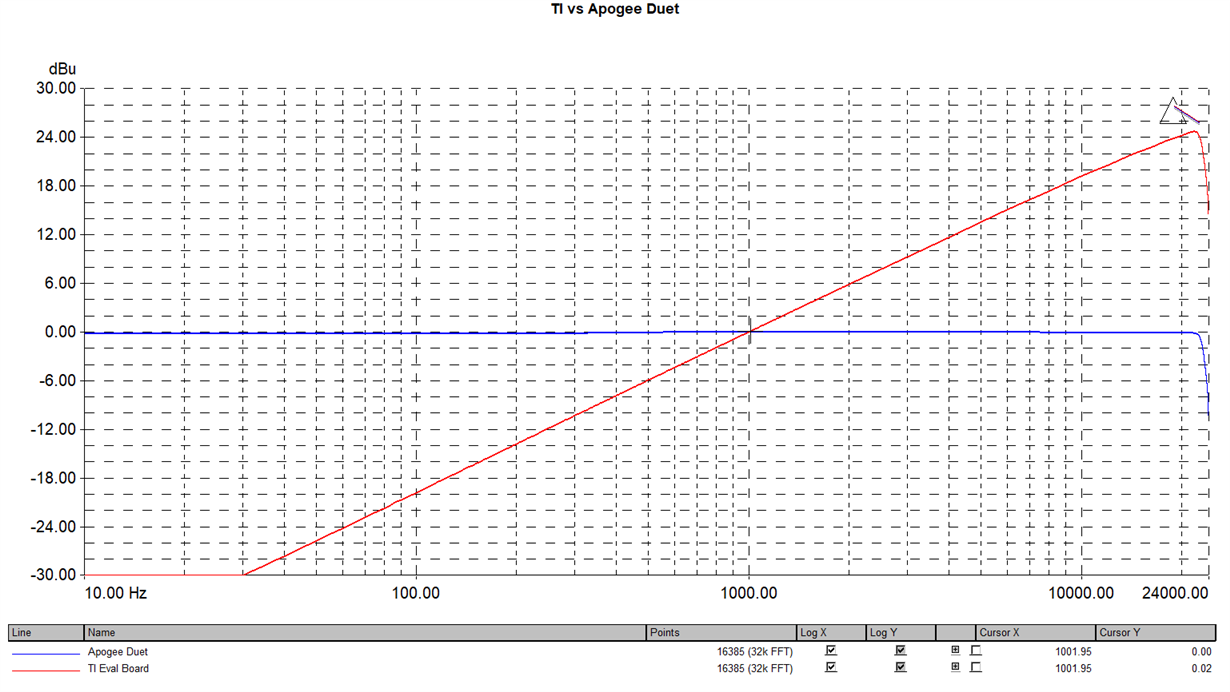Other Parts Discussed in Thread: PCM2912A, PCM2906C, PCM2912
Hello,
I purchased a 2912A EVM board to get some testing done on it. While running frequency response on Mic input to USB, I found out that there was a high pass response to it. It was not flat the way the datasheet suggests. Below are 2 plots: The red plot is the PCM2912A Mic response using the prism sound and the blue plot is the Apogee duet line response.
I thought it might have been a PCB issue, so I purchased another Eval board, same results. Also, I did a loop back from Mic in, to sidetone to headphone out and the response is similar to the
red plot below as well.
Any help would be appreciated.



